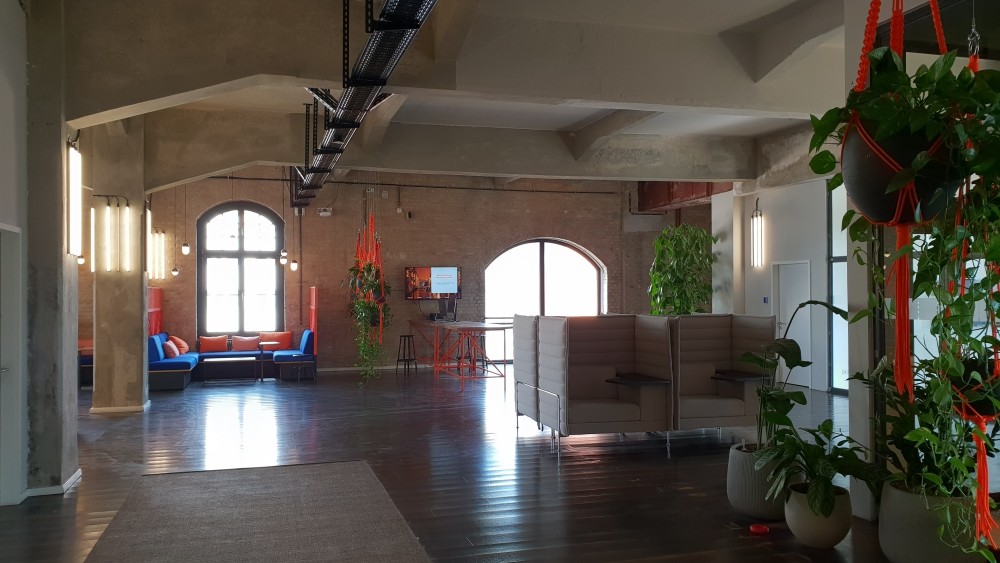
You select the days you want to travel, the origin, and the destination, and click on search. Within a few seconds, numerous results appear on your screen. These results are the result of hundreds of internal searches that users do not see, but that all price comparison and travel search websites do automatically, tracking hundreds of providers to offer the results. But how exactly do they work?
To verify this we have gone to Berlin, where the Kayak search engine has one of its main European offices. There we have been able to speak with some of its managers so that they tell us what is behind the curtain, the things that make a page like yours work but that users cannot see.
There we have spoken with Matthias Keller, Chief Scientist and Vice President of Technology of the company, as well as the head of marketing Stefan Petzinger, and other technicians. Together they have answered our questions and have been explaining to us how their website works.
This is how Kayak works inside

Algorithms are the great cornerstone of pages like Kayak. When you enter it and perform a search, its engine begins to simultaneously perform hundreds of different searches on the pages of its partner providers, almost always through their APIs. When the results arrive, another search engine algorithm is in charge of automatically organizing them in a single-column format, and grouping the different results for the same flight.
The order of the results depends on the type of product you are looking for.
The order of the results depends on the type of product you are looking for. For example, if it is a flight, the results will be organized by price, although with suggestions that take into account aspects such as the duration of the flight, stopovers, or if it is a low-cost airline. On the other hand, if you are looking for hotels, the price is not the most important thing, and other parameters influence the order, such as reviews, price range, or distance from the center of a city.
Regarding the suppliers, Keller draws us to a good relationship with them. “Kayak is a great source of traffic for them and a good site for them to find consumers to book with them.” Some companies do not want to appear in any flight index, so in these cases, they are limited to showing the results in the search engine but without showing their price in the results.
Many of us who have used pages like this have noticed that sometimes the prices can vary from one search to another. When we ask Matthias, he tells us that they are fully aware that people think they are manipulating the results, but he assures us that they don’t do anything of the sort, even though they are fully aware that many people use private sessions or various browsers precisely because of that.
Kayak ensures that your searches are anonymous and always returns the same results.
According to the version they have given us, “Kayak searches are anonymous and the same results are always displayed.” But then why are there these differences? According to the technological vice president, prices can change due to timing and dates, since airlines can make changes in a few minutes, but they do not modify them deliberately or depending on the device.
The web also implements other functions, such as a price prediction algorithm. This algorithm searches the internal history of how prices have moved in other years on similar dates, and based on the results, it advises you to take a flight now and wait a few days, as it believes that the price could drop.
Another thing that users don’t usually see is how Kayak makes its technicians aware of how the changes they implement affect the web. For this, in the offices, we have been able to see screens on the walls with the traffic in real-time, so that if something breaks the web they will immediately see that there is a drop in traffic.
Being a fairly important page, it is surprising that they have acquired other similar portals such as Momondo. When asked about this, they explained to us that it is all a matter of expansion strategy since Momondo was strong in countries like Russia where Kayak has less presence, so it is a way to position itself in that market.
How Kayak Makes Money

When looking for flights and hotels on the Internet you can find two types of pages, OTAs and metasearch engines. Its purpose is the same, to help you find flights and hotels at the best price, but the way it works and, above all, the way it makes money is different.
OTAs are online travel agencies, and hence their name, which means Online Travel Agency. Among them, we can find large pages such as Booking, and they make money by buying reserve stock and selling it at a slightly higher price to obtain benefits through a small commission.
And then there are metasearch engines like Kayak, which don’t offer you the ability to buy flights but simply link you to the OTAs where you can buy them. Like other search engines on the net, their way of making money is to sell advertising space on their website. In addition to this, they have also told us that they have a referral system with which providers pay them a small commission in exchange for taking clicks to their website.
This is sustainable because Kayak’s customers are not travelers, but the companies that users can find in the search engine. Come on, this page does not live only from the number of people who enter, but from the interest of the OTAs so that these users go to them through the search engine.
According to data from 2016, 30% of the search engine benefits come from airline referrals and another 15% from referrals from hotel and car rental companies. The second major source of income is the aforementioned advertising since it offers advertising placements on its website to travel agencies, travel providers, and other related companies, charging them in each case depending on the clicks or impressions.
After scandals like Cambridge Analytica, we asked the Kayak guys if they sold their users’ data or if they believed that this type of problem would harm them. Their response was to try to respond halfway by ensuring that user data is only used for experience personalization and that they are transparent about how they use the information and how they obtain it. “We do nothing without the consent of the people,” we have been told.
With the point put on other platforms
In recent years, Kayak has also been trying to take steps on other platforms, such as virtual assistants. In this regard, they have been working to offer us the possibility of booking flights and hotels both on Alexa and on Facebook Messenger, in the first case through simple voice commands and in the second through a slightly more complex bot with more information.
Their advances in this field are now aimed at improving the understanding of the way users speak, and it does not seem that they are going to invest too much in being on many other platforms. In Google Assistant they are, but we have been told that Siri is too complex and Cortana too minority to invest in them. The same happens in messaging apps, they would like to be on WhatsApp if they ever have bots, but Telegram and others are too minority.
All these projects about artificial intelligence began in the Kayak Labs, his incubator of ideas. From it also comes another development that has already been launched in the beta phase, an application to offer travel experiences through virtual reality glasses.
We’ve been testing it and found it to be an interesting concept, albeit too sparse in content to be considered little more than proof of concept. It remains to be seen if devices like the Oculus Go speed up this virtual reality sector enough for users and developers to take it a little more seriously.

Sharlene Meriel is an avid gamer with a knack for technology. He has been writing about the latest technologies for the past 5 years. His contribution in technology journalism has been noteworthy. He is also a day trader with interest in the Forex market.









![How to Watch UFC 303 Live Stream Free [Updated 2024] UFC 259 Live Stream Free](https://techsmartest.com/wp-content/uploads/2022/03/UFC-259-Live-Stream-Free-100x70.jpg)

